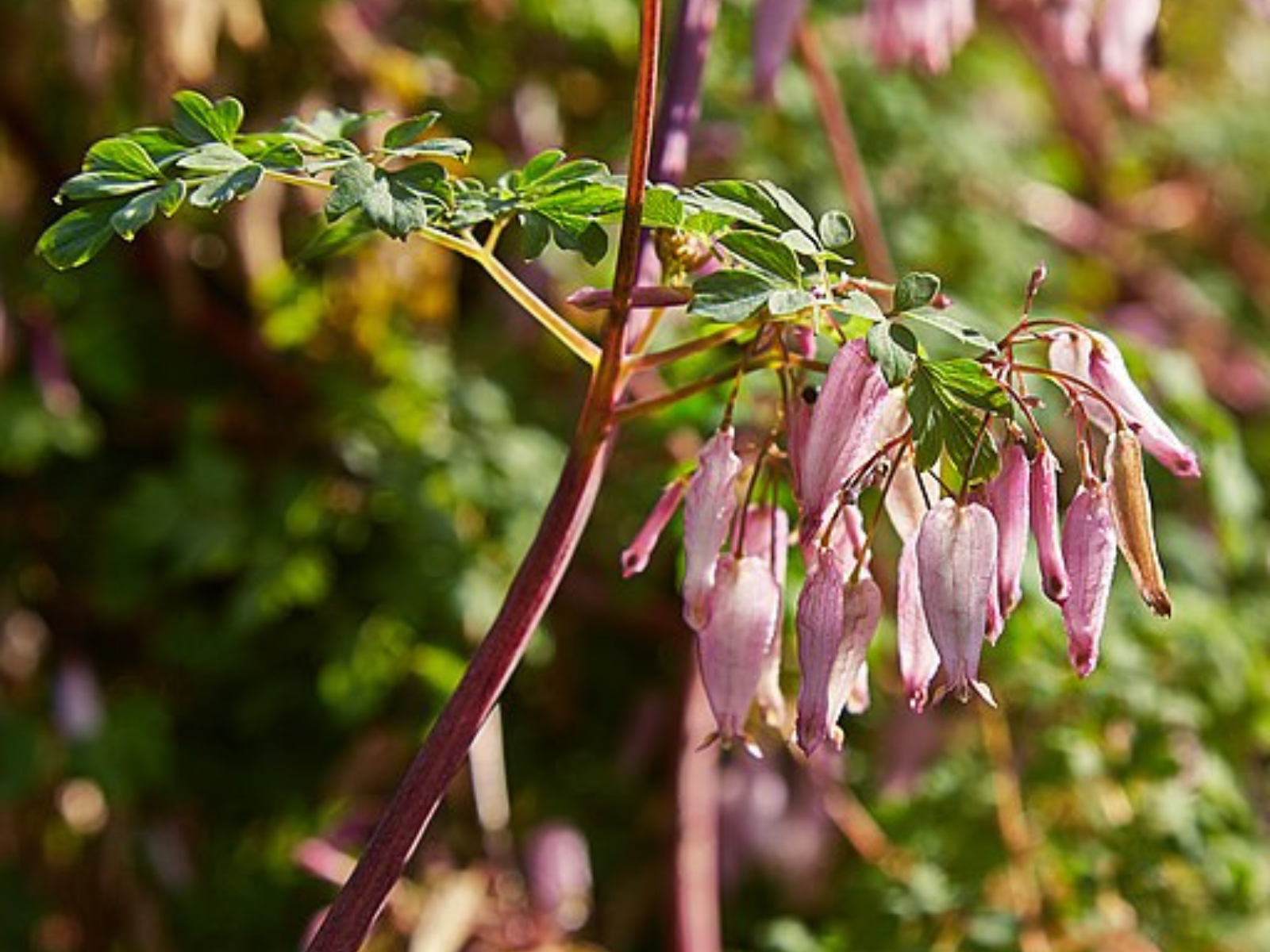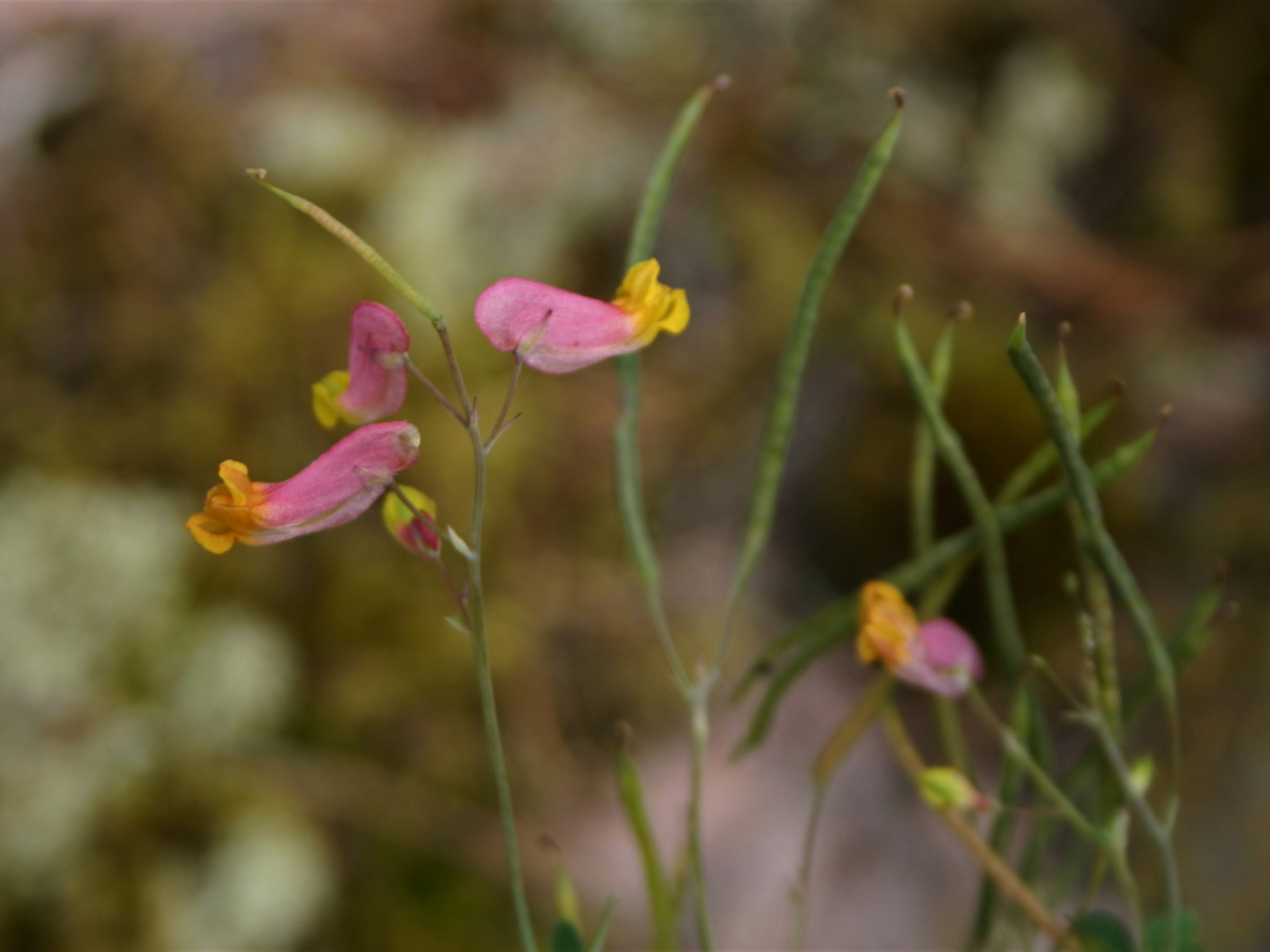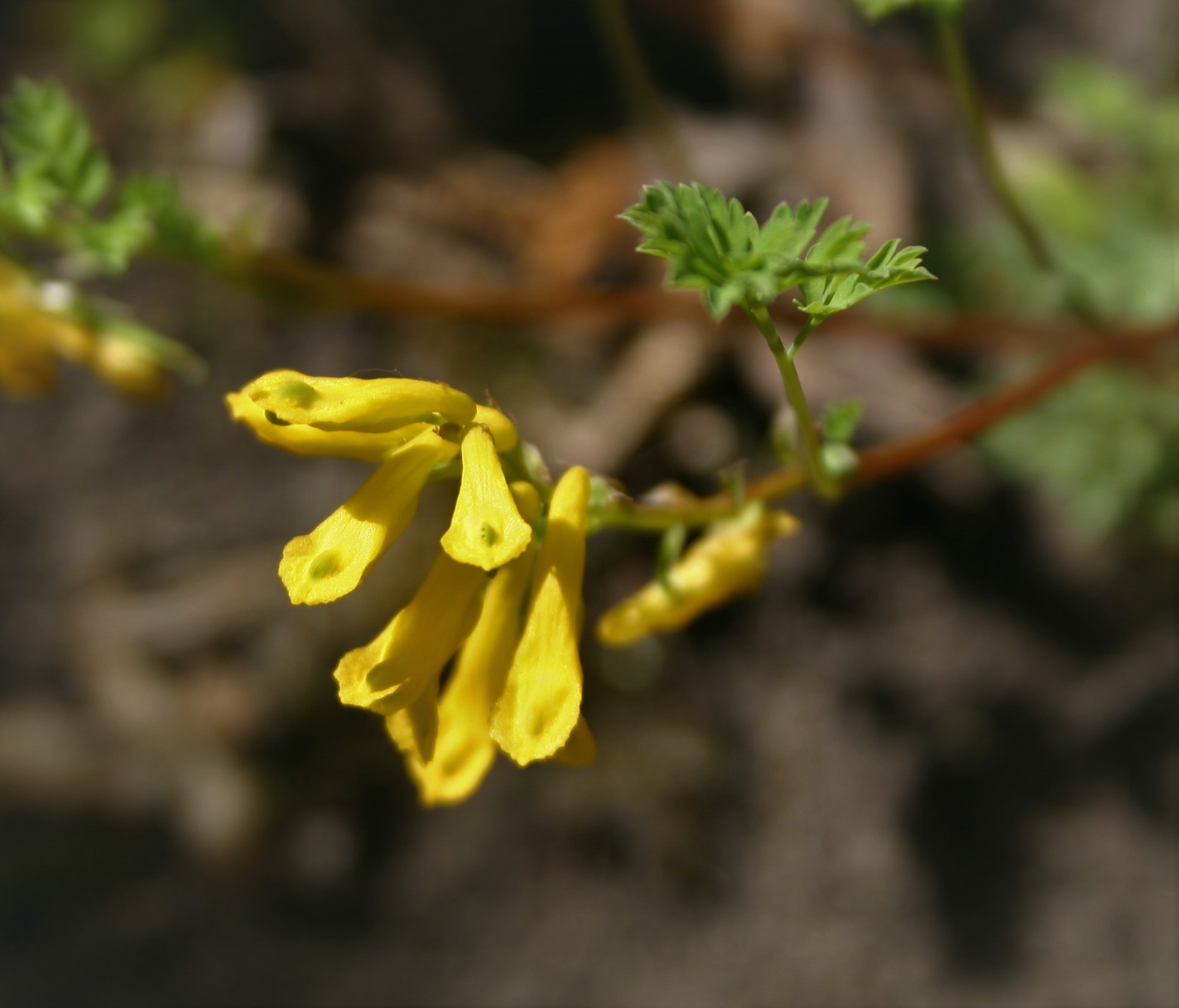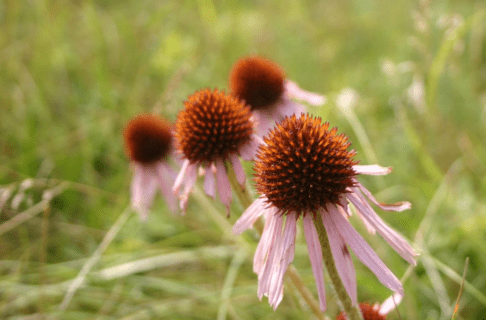Posted on: Wednesday July 8, 2020

A week ago I posted a blog about a rare plant (click here to read it) that I had been searching for in the West Hawk Lake area: climbing fumitory. Since then I’ve had several people ask me how to tell this plant (shown in in the picture on the left) apart from other similar species. In Manitoba there are only five species in the fumitory family and they are fairly easy to tell apart: two are rare and found in the southeast (climbing fumitory and Dutchman’s breeches), one is a weed from Europe (common fumitory), and the other two are fairly common in open woods and clearings in the boreal forest (corydalis).
All the plants in the fumitory family look somewhat similar to the common garden plant known as bleeding heart (Dicentra spectabilis), shown above. I think every child in the prairies has observed the heart-shaped pink and white flowers of this spring-blooming species before. I’ve got several in my yard that were probably planted when the house was built in the 1950’s. The leaves of species in this family are divided and almost fern-like in appearance. The flowers have four petals but they are irregularly shaped; that is, they are not all identical to each other, similar to snapdragons or orchids. The two inner petals are a different shape from the two outer petals. The outer petals may be mirror images of each other (e.g. Dutchman’s breeches, climbing fumitory) or dissimilar (corydalis). Although these plants are often lumped in with the poppy family (Papaveraceae), some sources (i.e. Flora of North America) consider them unique enough to be in their own family, the Fumariaceae.

Bleeding heart (Dicentra spectabilis). From Wikimedia Commons victorgrigas / CC0 .

Pink corydalis (Corydalis sempervirens) has pink and yellow flowers and long seed capsules.
Ecologically the plants in this family are poisonous (so no nibbling). Insects, however, enjoy the nectar found in the petal spurs. To get the nectar, long-tongued pollinators have to pry the outer petals apart, in the process rubbing up against the male (stamens) and female (pistil) parts of the flower, resulting in fertilization. However, some shorter-tongued insects have figured out that they can get the nectar just by nibbling a hole in the petal spur. See if you can find any of these cheat holes in the plants that you observe in nature.

The seeds of the two corydalis species and Dutchman’s breeches have elaiosomes attached to them. These are fatty packets that ants like to eat. Ants pick up the corydalis seeds that pop out of the capsules when ripe, and carry them off to their nests where they chew the elaisomes off, leaving the seed onthe disturbed ground near the ant nest.
Golden corydalis (Corydalis aurea) is a common herb in open areas in the Boreal Forest.
Here’s an identification key to the plants of the fumitory family (Fumariaceae) found in Manitoba. To use this key, select the statement that best describes your plant until you arrive at a species name rather than a number.
| 1. Plants are vines that climb up trees or rocks using tendril like-leaflets; petals almost completely fused together with a spongy texture | Climbing fumitory (Adlumia fungosa) |
| 1. Plants are herbs not vines; petals fused only near the base, not spongy | 2 |
| 2. Both outer petals with a spur | Dutchman’s breeches (Dicentra cucullaria) |
| 2. Only one outer petal with a spur | 3 |
| 3. Flowers pink; fruit rounded, not splitting open; seeds lacking appendages | Common fumitory (Fumaria officinalis) |
| 3. Flowers yellow or pink with a yellow tip; fruit a long capsule that splits open; seeds with small appendages (elaiosome) | 4 |
| 4. Petals pink tipped with yellow; seeds to 1 mm diameter | Pink corydalis (Corydalis sempervirens) |
| 4. Petals yellow; seeds to 2 mm diameter | Golden corydalis (Corydalis aurea) |






